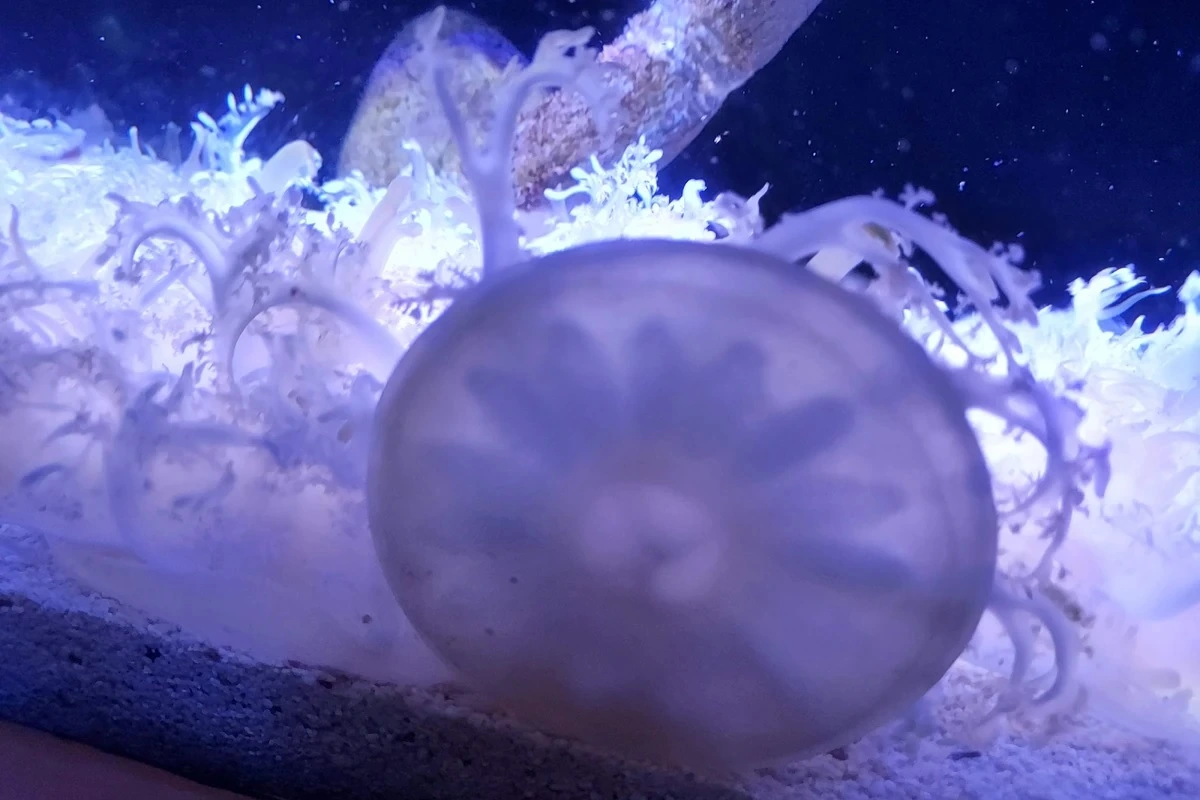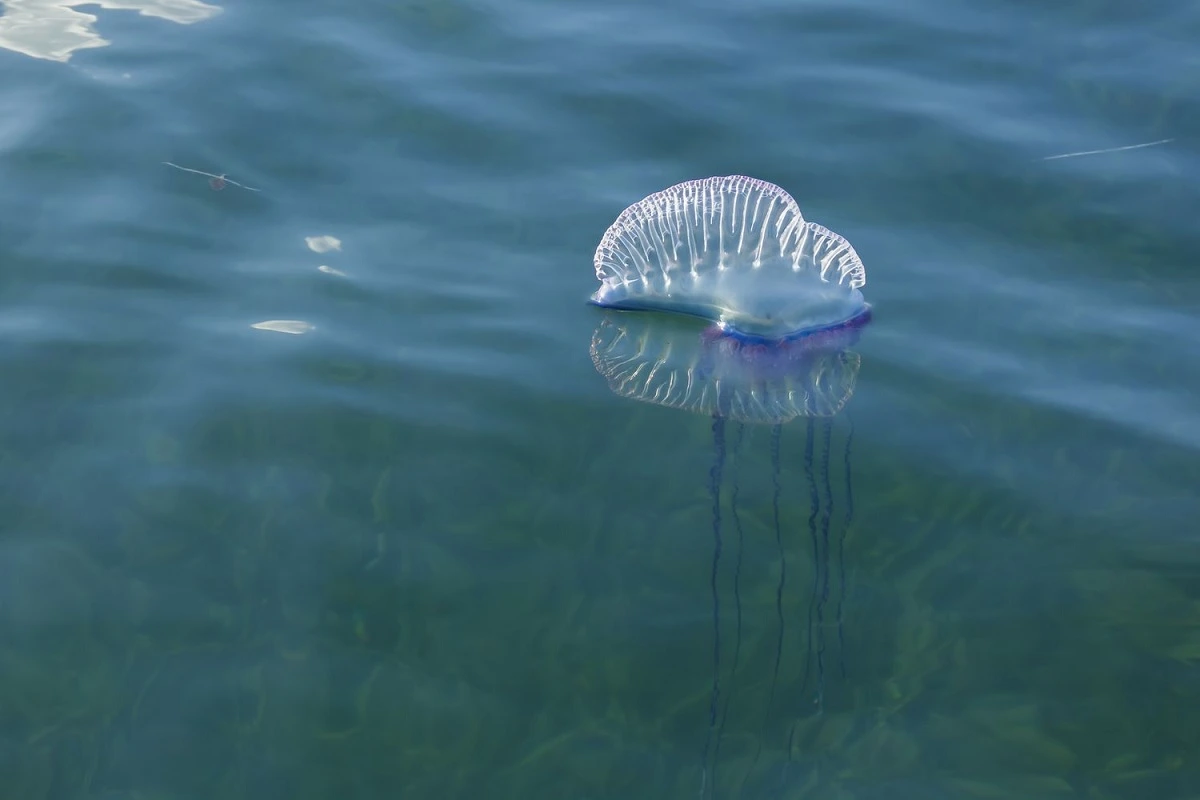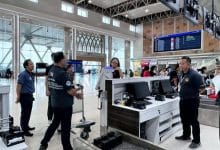Types of jellyfish in Thailand

When you’re planning a trip to Thailand’s stunning beaches, it’s important to be aware of the marine life you might encounter. Among the fascinating creatures in Thai waters, jellyfish stand out for their beauty and, in some cases, their potential danger. While most jellyfish in Thailand are harmless, it’s crucial to know about the types that can pose a threat.
Understanding these jellyfish, including where they are found and the precautions to take, can help make your experience in Thailand’s waters safer and more enjoyable. Let us now explore each of them one by one.
Types of jellyfish in Thailand
Before we delve into how many types of jellyfish are there in Thailand, It is also important to check the potential harms and risks they pose or if they are harmful. This video guide by Thailand Tony No Nonsense Guide is going to be a lot more useful for that as he himself decided to take a look and see if he can find any evidence of the current jellyfish problem that seems to be sweeping through Phuket.
Here is a diagram that shows how many types of jellyfish exist in Thai seas;
| Common Name | Scientific Name | Habitat | Characteristics | Danger Level to Humans |
|---|---|---|---|---|
| Box Jellyfish | Chironex fleckeri | Coastal waters, shallow bays | Transparent, cube-shaped bell, up to 15 tentacles per corner | Highly venomous, can be fatal |
| Moon Jellyfish | Aurelia aurita | Coastal waters, open seas | Transparent, saucer-shaped bell, short tentacles | Mild sting, generally harmless |
| Cannonball Jellyfish | Stomolophus meleagris | Estuaries and coastal waters | Dome-shaped bell up to 25 cm in diameter; brown rim pigment | Mild irritation, low risk to humans |
| Upside-Down Jellyfish | Cassiopea andromeda | Shallow waters, mangrove areas | Inverted bell, sits on the sea floor with tentacles upward | Mild sting, typically harmless |
| Portuguese Man O’ War | Physalia physalis | Open seas occasionally washed ashore | Blue or violet float, long stinging tentacles | Highly venomous, severe pain |
Box Jellyfish

The Box Jellyfish is considered one of the most dangerous marine creatures found in Thailand’s waters. It is known for its potent venom, which can cause intense pain, paralysis, and, in severe cases, death. The jellyfish’s nearly invisible, cube-shaped body and long tentacles make it difficult to spot in the water.
Box jellyfish stings require immediate first aid treatment, including the use of vinegar to neutralise the venom and urgent medical attention. Awareness and precautionary measures are crucial to safely enjoy Thailand’s beaches.
What you need to know about Box Jellyfish in Thailand
- Life-threatening venom: The venom from a Box Jellyfish can cause heart failure, shock, and severe allergic reactions if untreated.
- Quick action saves lives: Immediate application of vinegar is crucial to neutralise venom. Seek urgent medical attention to prevent serious outcomes.
- Seasonal presence: They are mainly active during the rainy season (May to October), though they can be present throughout the year.
- Emergency kits on beaches: Many popular beaches now have vinegar stations for first aid treatment. Know where these are before entering the water.
- Protective gear: Wearing a full-body stinger suit is advised when swimming in known box jellyfish areas to reduce the risk of getting stung.
Moon Jellyfish

The Moon Jellyfish is a common jellyfish species found in Thai waters, known for its translucent, saucer-shaped bell and gentle movement through the ocean. Unlike its dangerous counterparts, the Moon Jellyfish is relatively harmless, with stings that cause only mild irritation.
This makes it a more approachable species for swimmers and snorkelers. They are often seen drifting in large groups, creating an enchanting underwater display. Moon jellyfish are most active in the warmer months, and while not particularly dangerous, their stings can still cause minor discomfort, especially to sensitive individuals.
What you need to know about Moon Jellyfish in Thailand
- Mild stings: The sting from a Moon Jellyfish is typically harmless to humans, causing only mild itching or irritation.
- Seasonal swarms: Moon Jellyfish often gather in large blooms, especially during the warmer months when food sources are abundant.
- Best seen at night: Their bioluminescent qualities can sometimes be seen during night dives or snorkelling, offering a magical experience.
- First aid: In case of a sting, rinsing the affected area with seawater and applying a cold compress can help alleviate any discomfort.
- Harmless to swimmers: They are considered safe to swim around, making them a popular species for divers and underwater photographers.
Cannonball Jellyfish

The Cannonball Jellyfish is a relatively common species in Thailand’s coastal waters, known for its distinctive round shape resembling a cannonball. This species is not considered particularly dangerous to humans, as their sting is mild and usually only results in slight skin irritation.
Cannonball jellyfish are often seen in large groups and are an important part of the marine ecosystem, providing a food source for various marine animals. Their presence is often harmless to swimmers, making them a lesser concern compared to other jellyfish species in Thai waters.
What you need to know about Cannonball Jellyfish in Thailand
- Low-risk stings: Cannonball Jellyfish have mild venom that generally causes slight skin irritation, making them a low-risk species for beachgoers.
- Seasonal blooms: They tend to appear in large aggregations, particularly during certain seasons when environmental conditions are favourable.
- Ecological role: Cannonball Jellyfish serve as a significant food source for marine life, including sea turtles.
- First aid for stings: If stung, rinsing the area with seawater and applying a cold compress can alleviate any mild irritation.
- Can you eat it?: In some parts of the world, Cannonball Jellyfish are harvested for their culinary uses, though this is not common in Thailand.
Upside-Down Jellyfish

The Upside-Down Jellyfish is a unique species that prefers resting on the seafloor with its bell facing down and tentacles pointing upward, resembling underwater flowers. Unlike other jellyfish, this species has a symbiotic relationship with algae in its tissues, relying on sunlight to produce food.
Its sting is generally mild, often causing minor discomfort rather than serious harm, making it relatively safe for divers and snorkelers. Upside-down jellyfish are typically found in shallow waters, thriving in lagoons, seagrass beds, and mangrove areas, adding an intriguing element to the underwater scenery.
What you need to know about Upside-Down Jellyfish in Thailand
- Mild sting: The sting of an Upside-Down Jellyfish is generally mild and may only cause a slight rash or irritation in sensitive individuals.
- Photosynthesis symbiosis: It relies on symbiotic algae in its body, using sunlight to produce energy, which is why it often rests upside-down to maximise light exposure.
- Interesting behaviour: Unlike most jellyfish, this species rests on the ocean floor with its tentacles facing upward, creating a unique appearance resembling underwater flowers.
- First aid: If stung, rinse with seawater and apply a soothing cream or cold compress to alleviate irritation.
- A beautiful sight for snorkelers: The unique appearance of these jellyfish makes them an intriguing sight for snorkelers exploring shallow coastal areas.
Portuguese Man-of-War

The Portuguese Man-of-War is often mistaken for a jellyfish, but it is actually a siphonophore—a colonial organism made up of multiple specialised units working together. Known for its striking blue or violet float, the Portuguese Man-of-War is infamous for its highly venomous sting, which can cause intense pain, breathing difficulties, and even more severe reactions if untreated.
Though it is not aggressive, its long tentacles can extend significantly, posing a risk even to those who aren’t directly near it. It’s crucial for swimmers to keep their distance if they spot this species in Thai waters.
What you need to know about Portuguese Man-of-War in Thailand
- Severe sting: The sting can be extremely painful and may cause breathing difficulties, muscle spasms, and potentially serious reactions. Immediate attention is crucial.
- Not a true jellyfish: Despite appearances, the Portuguese Man-of-War is a colonial organism, meaning it’s made up of multiple individuals functioning as one.
- Treat with caution: Do not use vinegar for treatment, as it can trigger the release of more venom. Instead, rinse with seawater and carefully remove tentacles with gloves.
- First aid: After rinsing with seawater, immerse the area in hot water (not scalding) for pain relief, and seek URGENT MEDICAL HELP.
- Avoid swimming near it: Its tentacles can extend several meters beyond its float, so maintaining a safe distance is crucial to avoid accidental stings.
Where can you find these different types of jellyfish in Thailand?
| Jellyfish Type | Common Locations in Thailand |
|---|---|
| Box Jellyfish | Phuket, Krabi, Koh Samui, Gulf of Thailand |
| Moon Jellyfish | Phuket, Krabi, Pattaya, Gulf of Thailand |
| Cannonball Jellyfish | Coastal waters of Phuket, Krabi, Gulf of Thailand |
| Upside-Down Jellyfish | Shallow areas, and mangroves around Phuket and Krabi |
| Portuguese Man O’ War | Andaman Sea, Phuket, Krabi, Koh Samui |
While these creatures add wonder to your aquatic adventures, staying informed about their types and potential dangers is crucial for your safety. By understanding the various jellyfish species and taking preventive measures, you can minimise risks and enjoy your beach experience.
Always prioritise safety by being vigilant, wearing protective clothing, and seeking immediate medical attention if stung. With awareness and preparedness, you can fully appreciate the beauty of Thailand’s marine life while ensuring a safe and memorable visit.
Frequently asked questions
Some jellyfish in Thailand, such as the Box Jellyfish and Portuguese Man O' War, are highly dangerous due to their venomous stings, which can be fatal if untreated. Others, like the Moon Jellyfish, Cannonball Jellyfish, and Upside-Down Jellyfish, are generally harmless and may only cause mild skin irritation. Jellyfish are most common in Thailand during the rainy season, which typically runs from May to October. During this time, it's important to stay vigilant and follow local warnings while swimming. To avoid jellyfish stings: Swim in designated areas with lifeguards. You can observe jellyfish, especially the harmless Moon Jellyfish and Upside-Down Jellyfish, safely in shallow coastal areas like Phuket, Krabi, Koh Samui, and Pattaya. However, avoid touching them and maintain a safe distance. No, not all jellyfish in Thailand are dangerous. The Box Jellyfish and Portuguese Man O' War have highly venomous stings, while the Moon Jellyfish, Cannonball Jellyfish, and Upside-Down Jellyfish are generally harmless and pose minimal threat to humans. Many popular beaches in Thailand, especially in tourist-heavy areas like Phuket and Krabi, have vinegar stations and first aid kits available for immediate treatment of jellyfish stings. It is recommended to familiarise yourself with their locations before entering the water. Yes, but with caution. If warning signs are posted or jellyfish sightings are reported, it's best to avoid swimming. If you do enter the water, wear protective clothing and stay alert. Always swim in areas where lifeguards are present, as they are well-informed about current conditions and can provide assistance if necessary.Are jellyfish in Thailand dangerous?
When are jellyfish most common in Thailand?
How can I avoid jellyfish stings while swimming in Thailand?
Wear a stinger suit or full-body protective suit.
Pay attention to warning signs or advisories on the beach.
Avoid swimming during the rainy season, especially in areas known for jellyfish.Where can I see jellyfish in Thailand safely?
Are all jellyfish in Thailand dangerous?
Are there first aid stations on beaches for jellyfish stings?
Can I swim at beaches where jellyfish are present?
Latest Thailand News
Follow The Thaiger on Google News:


























